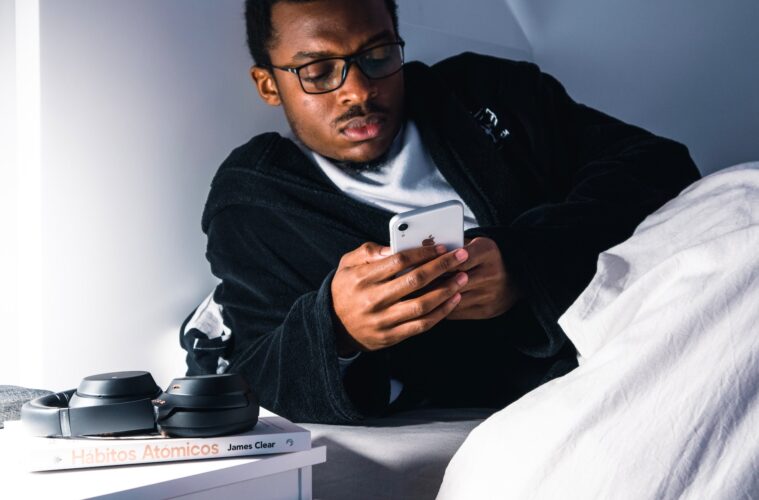In the modern digital age, mobile devices have become an integral part of our lives. From smartphones to tablets, these devices offer convenience and connectivity like never before. However, as their usage has increased exponentially, concerns about potential health risks, specifically radiation emissions, have also emerged. One particular worry is sleeping in close proximity to mobile devices. In this article, we will explore the concept of radiation from mobile devices and provide evidence-based insights to dispel the misconceptions surrounding this topic.
Understanding Radiation and Mobile Devices
To begin, it is crucial to grasp the concept of radiation. Radiation can be categorised into two main types: ionising and non-ionising. Ionising radiation, such as X-rays and gamma rays, possess enough energy to remove tightly bound electrons from atoms, potentially leading to cellular damage. Non-ionising radiation, on the other hand, lacks the energy required for ionisation and includes radio waves, microwaves, and the electromagnetic fields emitted by everyday electronic devices.
Mobile devices, including smartphones, emit non-ionising electromagnetic radiation, commonly referred to as radiofrequency (RF) radiation. RF radiation falls under the non-ionising spectrum, making it less harmful compared to ionising radiation. Additionally, the power levels emitted by mobile devices are relatively low, well below the threshold for causing any immediate health effects.
Radiation Levels and Safety Standards
The potential health risks associated with mobile devices are a subject of extensive research. Regulatory bodies and scientific organisations worldwide have established safety standards to ensure that mobile devices comply with the specified radiation limits. These standards include specific absorption rate (SAR) limits, which measure the amount of RF energy absorbed by the human body when using a mobile device.
Governments and regulatory agencies, such as the Federal Communications Commission (FCC) in the United States, enforce strict guidelines to ensure mobile devices meet these safety standards. These regulations are designed to protect the public from any potential harm associated with mobile device use.
Addressing Radiation Concerns during Sleep
While the safety standards provide reassurance, concerns remain about sleeping close to mobile devices. Some individuals worry that prolonged exposure to RF radiation emitted by mobile devices during sleep may lead to adverse health effects. However, current scientific evidence does not support these claims.
Firstly, the RF radiation emitted by mobile devices rapidly diminishes with distance. The intensity of the radiation decreases exponentially as you move away from the device. Therefore, the small distance between your body and a mobile device during sleep significantly reduces the amount of radiation exposure.
Secondly, even if you keep your mobile device close to you while sleeping, the total duration of exposure is relatively limited compared to the time spent awake and using the device. This short duration of exposure further minimises any potential risks.
Lastly, numerous scientific studies have investigated the impact of RF radiation on human health, including potential links to cancer. To date, there is no consistent evidence supporting a causal relationship between mobile device use and cancer development. The World Health Organization’s International Agency for Research on Cancer (IARC) has classified RF radiation as a Group 2B possible carcinogen, indicating limited evidence of a potential risk. However, this classification is based on studies conducted at higher exposure levels than those typically encountered in everyday mobile device usage.
Practical Tips for Healthy Mobile Device Usage
While the evidence suggests that sleeping close to mobile devices poses minimal risk, it is still prudent to adopt healthy mobile device habits. Here are some practical tips:
1. Use airplane mode: Before sleeping, consider enabling airplane mode or turning off the device’s wireless functions. This step not only eliminates potential RF radiation exposure but also reduces distractions, promoting better sleep.
2. Keep devices at a distance: If you prefer keeping your device nearby while sleeping, consider placing it a few feet away from your bed. This distance significantly reduces the intensity of RF radiation exposure.
3. Use speakerphone or headphones: If you need to make or receive calls before sleeping, utilise the speakerphone function or use headphones. This practice reduces the proximity of the device to your body, further minimising RF radiation exposure.
4. Opt for a wired connection: When listening to music or watching videos before sleep, use wired headphones instead of Bluetooth ones. This choice eliminates any potential RF radiation emissions from the Bluetooth connection.
Conclusion
The concerns surrounding radiation from mobile devices during sleep have generated significant public discourse. However, scientific research and safety standards established by regulatory bodies provide substantial evidence to alleviate these concerns. The non-ionising RF radiation emitted by mobile devices falls within safe limits, and the distance and duration of exposure during sleep further reduce any potential risks. By adopting healthy mobile device habits, such as enabling airplane mode and keeping devices at a distance, individuals can confidently enjoy the benefits of technology while prioritising their well-being.





